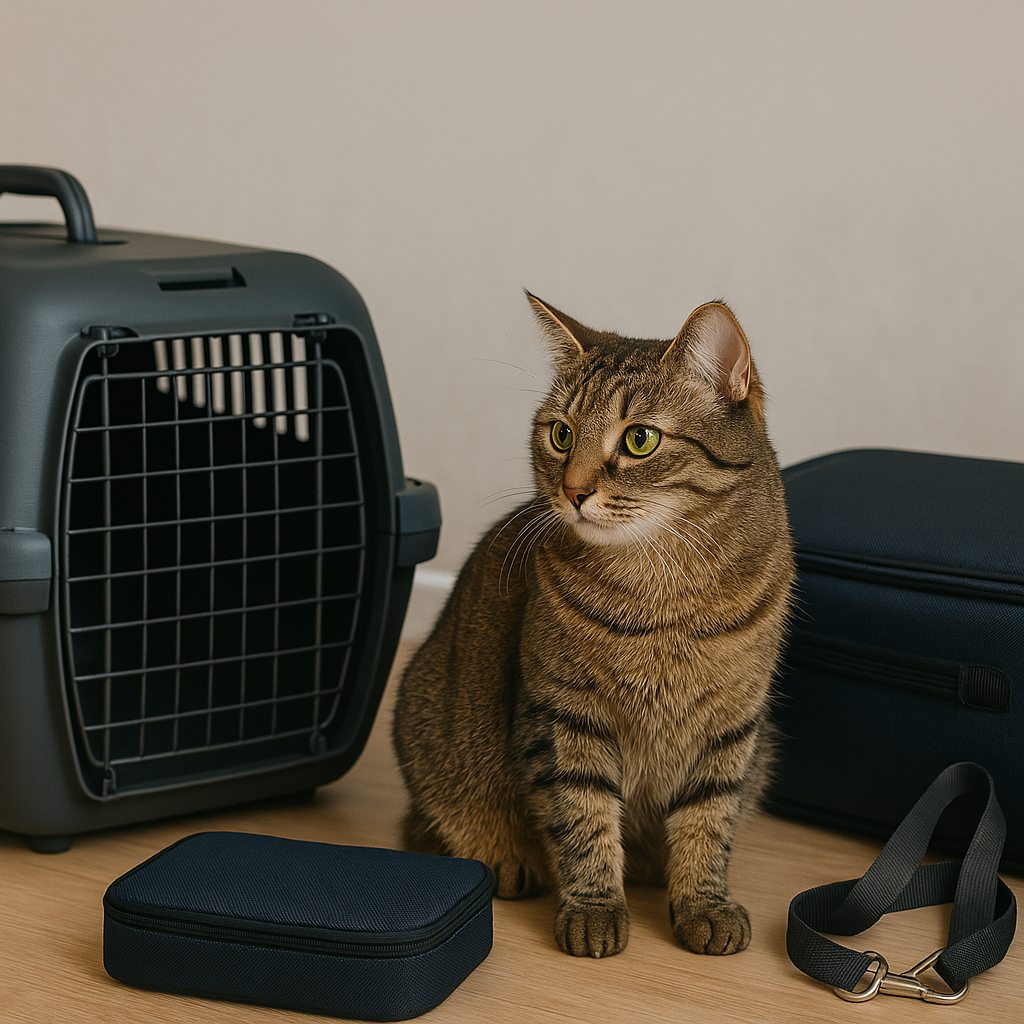
Preparing Your Cat for Travel: A Comprehensive Guide
Share
Traveling with a cat can be a daunting experience, but with the right preparation, you can ensure a smooth and stress-free journey for both you and your feline companion. Cats are creatures of habit, and sudden changes in their environment—like being placed in a carrier and taken on a trip—can cause anxiety. Whether you're planning a short car ride to the vet, a long-distance move, or even an international flight, careful planning and gradual acclimation are key to making the experience as comfortable as possible for your cat.

How Can You Travel with Your Cat Without Stress?
The first step in preparing your cat for travel is getting them comfortable with their carrier. Many cats associate carriers with negative experiences, such as vet visits, so it’s important to create positive associations well before your trip. Start by leaving the carrier out in a familiar area of your home with the door open, allowing your cat to explore it at their own pace. Placing treats, toys, or a soft blanket inside can encourage them to enter voluntarily. Over time, you can practice closing the door for short periods while offering rewards to reinforce positive behavior. If your cat remains hesitant, try feeding them near or inside the carrier to build trust. For longer trips, consider taking short practice drives to help your cat adjust to the motion and sounds of travel.
Before embarking on any trip, a visit to the vet is essential to ensure your cat is healthy and up-to-date on vaccinations. This is especially important for air travel, as many airlines require a health certificate issued within a specific timeframe. If your cat tends to experience extreme stress during travel, your vet may recommend anti-anxiety medication or natural calming aids like pheromone sprays. Additionally, make sure your cat’s microchip information and ID tags are current in case they get lost during the journey. Having clear identification can significantly increase the chances of a safe reunion.

Packing the right supplies is crucial for keeping your cat comfortable during travel. Bring enough food and water for the duration of the trip, along with collapsible bowls for easy feeding. A portable litter box and familiar litter will help maintain your cat’s routine and reduce accidents. Including a favorite blanket or toy can provide comfort by carrying familiar scents from home. If your cat is on any medications, pack them in an easily accessible location along with a basic pet first-aid kit. For road trips, a leash and harness can be useful for safe bathroom breaks, but never allow your cat to roam freely in the car—this can be dangerous for both you and your pet.
The method of travel you choose will determine the specific preparations needed. If you’re traveling by car, secure the carrier with a seatbelt to prevent it from sliding during sudden stops. Keep the temperature inside the car comfortable, and never leave your cat unattended in a parked vehicle, as temperatures can rise quickly and become life-threatening. Plan for regular breaks every few hours to offer water and a chance to use the litter box. For air travel, research airline policies in advance—some allow cats in the cabin if they meet size requirements, while others may require them to travel in the cargo hold. If your cat must fly in cargo, choose a direct flight to minimize stress and ensure the carrier is well-ventilated and airline-approved. Avoid sedating your cat unless specifically advised by a vet, as sedation can interfere with their ability to regulate body temperature and breathing at high altitudes.

Keeping your cat calm during travel is one of the biggest challenges. Covering the carrier with a light blanket can help block out overwhelming sights and sounds, creating a more secure environment. Soft music or white noise can also mask unfamiliar noises that might cause stress. Speaking to your cat in a soothing voice and offering occasional treats can provide reassurance. If your cat is particularly anxious, pheromone sprays or calming collars may help reduce their stress levels. Pay attention to their body language—if they seem excessively distressed, take a break and allow them to relax before continuing.
Once you arrive at your destination, give your cat time to adjust to the new environment. Set up a quiet, confined space with their familiar belongings, such as their bed, litter box, and food dishes. Allow them to explore gradually, starting with one room before giving them access to larger areas. Maintaining their usual feeding and play schedule can provide a sense of normalcy. Some cats may hide or act skittish at first, which is normal—avoid forcing interaction and let them come out on their own terms.

For longer trips or international travel, additional considerations may be necessary. Research pet entry requirements for your destination, as some countries have strict quarantine laws or require specific vaccinations and documentation. If traveling across time zones, gradually adjust your cat’s feeding schedule a few days before departure to minimize disruption. For road trips spanning multiple days, book pet-friendly accommodations in advance and bring familiar items to help your cat feel at home in temporary lodgings.
Ultimately, the key to successful cat travel is patience and preparation. Every cat reacts differently, so pay attention to your pet’s individual needs and comfort levels. With time and positive reinforcement, even the most travel-averse cats can learn to tolerate—and even enjoy—trips with their owners. By following these steps, you can ensure a safer, calmer, and more enjoyable travel experience for both you and your feline friend.
